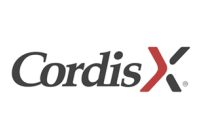WALTHAM, Mass.–(BUSINESS WIRE)–Corindus Vascular Robotics, Inc. (NYSE American:CVRS), a leading developer of precision vascular robotics, announced today that Ryan Madder, M.D., an interventional cardiologist at Spectrum Health, has successfully completed a remote percutaneous coronary intervention (PCI) in a porcine model using the CorPath GRX System from a location greater than 100 miles from the catheterization lab. Working from a Spectrum Health facility in Ludington, MI, Dr. Madder leveraged the CorPath GRX System to remotely manipulate interventional devices through the subject’s coronary arteries while utilizing a telecommunications system to communicate with the bedside staff based in Grand Rapids, MI.
Dr. Madder has been exploring the feasibility of remote PCI since 2016 when he completed and published the REMOTE-PCI study. In that study, Dr. Madder and colleagues completed multiple robotic stent procedures from an isolated room outside the procedure room. Procedural success was achieved in 19 of 20 patients (95.0%).
“The REMOTE-PCI study previously demonstrated that remote PCI is feasible,” stated Dr. Madder. “Our recent case completed over a distance of greater than 100-miles now demonstrates that remote robotic PCI can be successfully performed in vivo by a physician who is located at great distances away from the PCI recipient. This achievement is a significant milestone toward breaking down the geographic barriers that prevent many patients in remote regions of the world from undergoing coronary stenting.”
The global shortage of PCI-capable operators is significant and continues to be a growing problem. Remote PCI has the potential to enable physicians to conduct procedures from virtually any location, opening opportunities for more patients globally to receive the benefits of this lifesaving procedure.
“We have made considerable progress in the realization of remote PCI capabilities through work with our clinical partner at Spectrum Health,” stated Mark Toland, President and Chief Executive Officer of Corindus. “Dr. Madder’s 100-mile case simply exceeds our expectations. His achievement allows our customers and partners to envision the possibilities of remote treatment and validates our broader vision of striving to apply remote technology to treat other vascular diseases such as acute ischemic stroke.”
About Corindus Vascular Robotics, Inc.
Corindus Vascular Robotics, Inc. is a global technology leader in robotic-assisted vascular interventions. The company’s CorPath® System is the first FDA-cleared medical device to bring robotic precision to percutaneous coronary and percutaneous vascular procedures. During the procedure, the interventional cardiologist sits at a radiation-shielded workstation to advance guide catheters, stents, and guidewires with millimeter-by-millimeter precision. The workstation allows the physician greater control and the freedom from wearing heavy lead protective equipment that causes musculoskeletal injuries. CorPath GRX is the second generation robotic-assisted PCI technology offering enhancements to the platform by adding important key upgrades that increase precision, improve workflow, and extend the capabilities and range of procedures that can be performed robotically. With the CorPath System, Corindus Vascular Robotics brings robotic precision to interventional procedures to help optimize clinical outcomes and minimize the costs associated with complications of improper stent placement during manual procedures. Corindus stands behind its product with its unique $1,000 hospital credit “One Stent Program.” For additional information, visit www.corindus.com, and follow @CorindusInc.
Forward Looking Statements
Statements made in this release that are not statements of historical or current facts are “forward-looking statements” within the meaning of the Private Securities Litigation Reform Act of 1995. Forward-looking statements may involve known and unknown risks, uncertainties and other factors that may cause the actual results, performance or achievements of Corindus to be materially different from historical results or from any future results or projections expressed or implied by such forward-looking statements. Accordingly, readers should not place undue reliance on any forward looking statements. In addition to statements that explicitly describe such risks and uncertainties, readers are urged to consider statements in the conditional or future tenses or that includes terms such as “believes,” “belief,” “expects,” “estimates,” “intends,” “anticipates” or “plans” to be uncertain and forward-looking. Forward-looking statements may include comments as to Corindus’ beliefs and expectations as to future events and trends affecting its business and are necessarily subject to uncertainties, many of which are outside Corindus’ control.
Examples of such statements include statements regarding or such as:
- That completing a case at more than 100 miles demonstrates that remote robotic PCI can be successfully performed in vivo by a physician who is located at greater distances away from the PCI recipient;
- That completing a case at more than 100 miles is an achievement that is a significant milestone toward breaking down geographic barriers that prevent many patients in remote regions from undergoing coronary stenting;
- Corindus’ anticipation that remote PCI will enable physicians to conduct procedures from virtually any location;
- That Corindus is exploring telestenting as a solution to the geographic and workforce barriers that exist to provide needed PCI therapy to rural and underserved populations across the globe; and
- Corindus’ broader vision to strive to apply remote technology to treat other vascular diseases such as acute ischemic stroke.
Important factors that could cause actual results to differ materially from those indicated by such forward-looking statements are described in the sections titled “Risk Factors” in the Company’s filings with the Securities and Exchange Commission, including its most recent Annual Report on Form 10-K and Quarterly Reports on Form 10-Q, as well as reports on Form 8-K, including, but not limited to the following: our ability to expand our technology platform and achieve the advances necessary for telestenting and remote procedures, including in humans; our ability to expand our technology platform for use in other segments of the vascular intervention market, including neurointerventional and other more complex cardiac interventions; obtaining necessary regulatory approvals for the use on humans and marketing of our products in the United States and in other countries; risks associated with market acceptance; our ability to enforce our intellectual property rights; our need for additional funds to support our operations; factors relating to engineering, regulatory, manufacturing, sales and customer service challenges; and potential safety and regulatory issues that could slow or suspend our sales. Forward looking statements speak only as of the date they are made. Corindus undertakes no obligation to publicly update or revise any forward-looking statements, whether as a result of new information, future events or otherwise that occur after that date. More information is available on Corindus’ website at http://www.corindus.com.
Contacts
Corindus Vascular Robotics, Inc.
Media Relations:
Kate Stanton, 508-653-3335, ext. 200
kate.stanton@corindus.com
or
Investor Relations:
Lynn Pieper Lewis, 415-937-5402
ir@corindus.com






